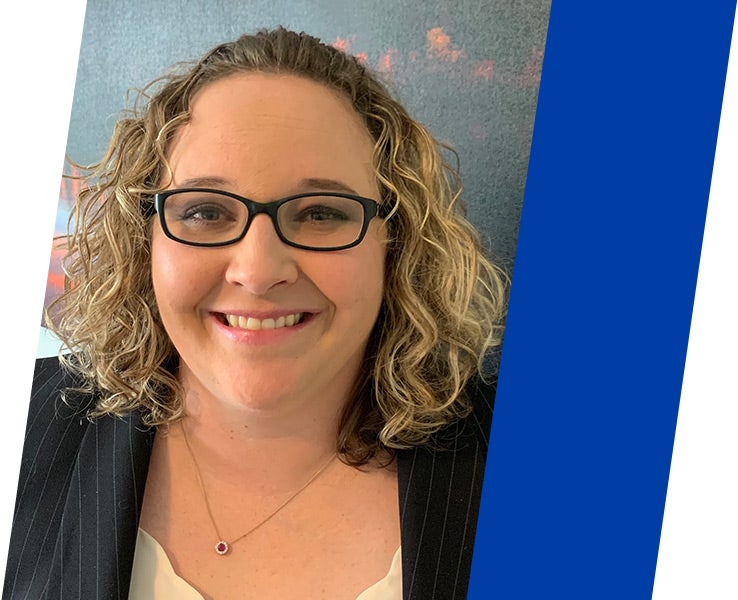Courtney Matzkind, 38, oversees a program that allows all Americans to sleep better at night. Her group ensures our national defenses can withstand high levels of radiation. As deputy chief of radiation hardness assurance for the U.S. Missile Defense Agency, she helps guarantee our ballistic missile systems won’t fail, even if subjected to nuclear radiation.
“In other words, we are responsible for all weapons systems being able to survive any attack from an enemy,” Matzkind said.
“I RECOMMEND THAT PEOPLE GO AFTER THE PROJECT OR JOB OR DEGREE THAT CHALLENGES THEM AND EVEN SCARES THEM A LITTLE. THAT’S HOW PEOPLE GROW.”
“I took my first physics class as a sophomore in high school and absolutely loved it. It answered a lot of questions about the universe for me,” she said. “I never knew I’d end up on the radiation and defense side of things, but it was a natural fit.”
Matzkind played on the women’s soccer team at UC Riverside for two years before diving into astrophysics. Her professors encouraged her to pursue a research project using the W.M. Keck Observatory in Hawaii, a rare opportunity for an undergraduate. She graduated in 2007 with a bachelor’s degree in physics.
“Getting that experience through UCR was amazing,” Matzkind said.
The two academic journal articles she published with that data helped land her first job as a parts engineer with Boeing. While working full time for Boeing, she was also a master’s student in physics at the University of Alabama. She was the only graduating female in her cohort.
“That experience was a challenge,” she said. “But I recommend that people go after the project or job or degree that challenges them and even scares them a little. That’s how people grow.”
Matzkind went on to secure a patent for a tool now used in two major U.S. Department of Defense missile programs. Using historical failure rates, varying stress levels over the system’s lifetime, and other factors, the tool predicts the date that the last part in a weapons system will fail. Then it helps forecast the number of parts needed for the system to maintain its effectiveness for a desired length of time.
Throughout her journey to becoming an expert in nuclear radiation effects, Matzkind says she’s had phenomenal mentors. She also ignored those who sought to discourage her. She’d like others, women in particular, to ignore voices telling them not to pursue careers in STEM. Matzkind credits her parents with helping her remain steadfast in pursuit of her scientific dreams. Her mother was an accountant, and in addition to flying planes, her father worked in aerospace as a director of marketing.
“They were excellent role models. Both had very good math and analytical skills, always encouraged the importance of school, and supported my love of science,” Matzkind said.
For women interested in STEM careers who lack role models or supporters like hers, Matzkind offers direct support to those who reach out.
“To any other woman who’s been told she can’t go the direction she wants to go, please know that isn’t true,” she said. “You can. I did.”
